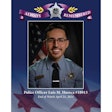Most U.S. hospitals are designed to be open and accommodating to their patients, staff and visitors. Comfortable furniture, medical equipment, phones, as well as the focus on customer service by both medical and security staff are all intended to help the infirm and their family and friends have as positive an experience as possible while at the facility.
But then your hospital is thrown a curve ball: a forensic patient (an inmate from the local prison or a suspect who has just been arrested) is brought in by police or corrections for medical treatment. How can your institution provide the necessary care for this challenging type of patient while keeping other patients, staff and the public safe?
Here are some mistakes many healthcare facilities make when managing these individuals:
1. Poor communication among hospital staff
"What I see most is a breakdown in communication as to when a forensic patient enters the institution," says Kevin Weeks, who formerly worked as a hospital nurse and is now ADT's director of marketing for healthcare solutions.
Often, the nursing unit admitting the patient won't let hospital security staff know an inmate has arrived. When this happens, security doesn't get the chance to let the law enforcement or corrections officers accompanying the inmate know about the procedures required by the Joint Commission.
"There should be certain parameters in place in regard to patient oversight," says Weeks.
2. Security, nursing staff and law enforcement don't know what to do when they are in the presence of a forensic patient
Because the sizes, locations and types of hospitals vary greatly across the country, there is no one set of rules for managing inmates who must receive medical treatment in a hospital. Even officers from the same jurisdiction sometimes handle forensic patients differently.
"You might have one officer from an agency stay with a forensic patient, while another one from that same agency feels more comfortable leaving him there and coming back later," says Bryan Warren, who is director of Carolinas Healthcare Systems Corporate Security.
And even when the law enforcement or corrections officer stays with the patients, hospital staff and the officer might not know who is in charge or what is expected of them.
"The biggest issue I see is a lack of communication between hospital security and local law enforcement as to what their roles and responsibilities are and should be, and what training is being given to security and police on common issues that are going to affect the forensic patient," says Warren. "Ideally, we should have a good relationship with local law enforcement to make sure they stay with that patient as much as possible, understanding that they have a lot of other things to do."
3. Not enough police or corrections officers guard the patient
According to San Antonio Community Hospital Director of Safety and Security Darren Morgan, the law enforcement agency handling the transfer of the forensic patient must assign the appropriate number of persons to the job.
"In each case I've look at [where an inmate has escaped from a hospital or caused an incident], especially when I was on the East Coast, there wasn't enough staff," he says. "There was either one police or corrections officer who became a victim and was overpowered because their weapon was taken from them and used on the officer or others. It's important to have a minimum of two police officers if the forensic patient is deemed to be a significant threat. Those officers should be with that patient as much as possible."[PAGEBREAK]
To address this issue, a risk assessment of the prisoner should be conducted prior to him or her being admitted. Obviously, someone who has been arrested for DUI or a misdemeanor poses less of a risk than a murder suspect. However, Warren provides this warning: forensic patients can be unpredictable.
"Even if the person hasn't been convicted of a heinous crime, you never really know what is going on with him," he says. "Perhaps they have other warrants that the police are not aware of at that time. Perhaps that person feels cornered. You never know what their response will be."
4. Lack of appropriate facilities
Before an inmate is admitted, the medical facility must ensure that his or her treatment room will be clear of furniture, objects and medical equipment (such as IV polls) that can be used as make-shift weapons. Unfortunately, most hospitals, but especially smaller ones and those in rural areas, don't have appropriate areas designated for inmates. In those cases, security personnel should do a clean sweep of the room or rooms before the inmate is admitted to the hospital.
There are some hospitals that do have well-secured areas designed specifically for forensic patients.
"In Greenville, S.C., through federal grants and other resources, they were able to create a secured mantrap entrance into a portion of their emergency room for law enforcement to use with inmates," says Warren. "It includes a walk-through metal detector and radios that enable police to communicate with hospital security while they are on site. The furniture is either bolted down or can't be used as a weapon or barricade. All of these things have been taken into consideration in that wing. It's an example how preplanning, architecture and getting security involved in the front end before they do an addition or renovation can be an outstanding compliment to the emergency room."
5. Law enforcement officers not paying attention to details
Some inmate handling errors defy explanation.
"I have witnessed or my officers have witnessed police officers who left their radios in the room with the forensic patient unattended," says Morgan.
"They have uncuffed a patient in their custody and left the room to go on a break, and it was one of our security officers who found the patient uncuffed on the bed," he adds. "Leaving forensic patients unattended is absolutely something that should not be done."
6. Not recognizing that situations can escalate to active shooter incidents
The tragic shooting death of Montgomery Regional Hospital Security Officer Derrick McFarland in 2006 is a prime example of how forensic patient handling can go terribly wrong.
He was shot and killed as he attempted to assist a Blacksburg, Va., Police Department deputy who had been overpowered by an inmate. During the struggle, the forensic patient took the officer's gun and turned the weapon on McFarland. After shooting him, the suspect fled the hospital on foot where he shot and killed another police officer on the campus of Virginia Tech.
Warren and Morgan both say that hospitals must not let their guard down and focus only on the healthcare issues of the inmate.
"A lot of facilities have the ability to lockdown and keep people out, but sometimes we don't do as good a job when they are already inside and something occurs," adds Warren.
He recommends hospitals explore ways they can compartmentalize the emergency departments and other areas designated for forensic patients to prevent prisoners from escaping, potentially leading to either an active shooter incident or hostage situation.
Related:
IAHSS Prisoner Patient Security Guidelines
Maryland's Model Guidelines for the Security of Prisoners for EMS and Hospital Settings
Armed Inmate Holds Preschool Hostage, After Attacking Deputy













